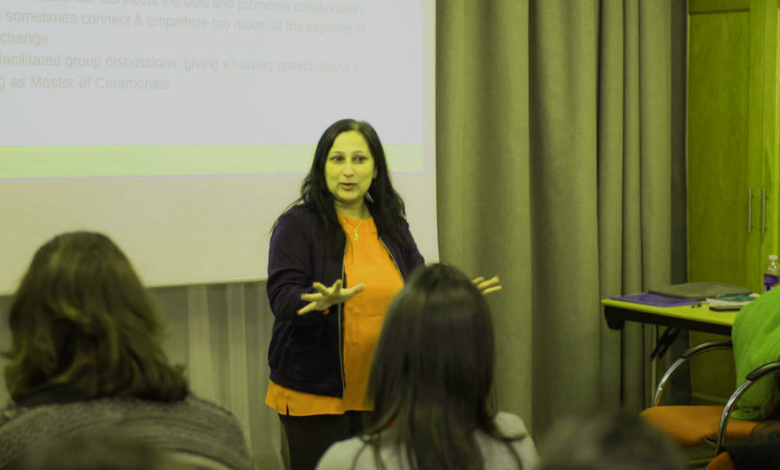How to Master Public Speaking: Tips from Experts
Master public speaking with expert tips. Overcome fear, engage audiences, and deliver powerful presentations confidently. Boost your communication skills now

Public speaking is one of the most valuable skills you can develop, whether for career advancement, leadership roles, or personal growth. Yet, for many, the mere thought of addressing an audience triggers anxiety and self-doubt. The truth is, even the most accomplished speakers once struggled with stage fright. The key to mastering public speaking lies not in eliminating fear but in learning to harness it. With the right techniques, consistent practice, and expert guidance, anyone can transform into a confident and compelling communicator.
This article explores proven strategies from seasoned speakers to help you conquer your nerves, craft engaging speeches, and deliver powerful presentations. From structuring your content for maximum impact to refining your body language and voice modulation, these expert tips will equip you with the tools needed to excel in public speaking. Whether you’re preparing for a business pitch, a wedding toast, or a TED-style talk, these insights will help you connect with your audience and leave a lasting impression.
How to Master Public Speaking
Understanding the Fear of Public Speaking
The fear of public speaking, known as glossophobia, affects a significant portion of the population. This anxiety often stems from the fear of judgment, failure, or forgetting one’s words. However, understanding that nervousness is normal—even for seasoned speakers—can help ease this fear. Experts suggest that rather than eliminating anxiety, you should learn to channel it into energy and enthusiasm for your speech. One effective way to combat fear is through preparation. Knowing your material inside and out builds confidence and reduces the likelihood of mistakes. Additionally, practicing in front of a mirror, recording yourself, or rehearsing with a trusted friend can help you refine your delivery. Another powerful technique is visualization—imagining yourself delivering a successful speech can condition your mind for the real experience. Breathing exercises also play a crucial role in managing stage fright. Deep, controlled breaths before and during your speech can calm your nerves and steady your voice. Remember, the audience wants you to succeed; they are not there to criticize but to gain value from your words. Embracing this mindset can shift your perspective and make public speaking a more enjoyable experience.
Crafting a Compelling Speech
A well-structured speech is the foundation of effective public speaking. Begin by defining your core message—what do you want your audience to remember? Whether you’re informing, persuading, or entertaining, clarity of purpose ensures your speech remains focused and impactful. The opening of your speech is critical, as it sets the tone and captures attention. Start with a strong hook—a surprising fact, a thought-provoking question, or a compelling story. This draws the audience in and makes them eager to hear more. Follow this with a clear introduction of your main points, ensuring a logical flow throughout the body of your speech. Support your arguments with evidence, anecdotes, or statistics to add credibility. Stories, in particular, are powerful tools because they engage emotions and make your message memorable. However, avoid overloading your speech with excessive data, as this can overwhelm listeners.
Mastering Delivery Techniques
Even the best-written speech can fall flat without effective delivery. Your voice, body language, and pacing all contribute to how your message is received.
Voice Modulation
Voice modulation is a powerful public speaking technique that involves varying your pitch, tone, pace, and volume to emphasize key points and maintain audience engagement. A monotone delivery can make even the most compelling content sound dull, while strategic vocal changes add emotion, clarity, and dynamism to your speech. Lowering your voice can create suspense or authority, while a higher pitch can convey excitement or urgency. Pauses allow important ideas to resonate, and changes in speed—slowing down for emphasis or speeding up for energy—help guide your audience’s attention. Mastering voice modulation not only makes your message more persuasive but also helps you connect emotionally with listeners, turning a good speech into an unforgettable one.
Body Language
Your posture, gestures, and facial expressions convey confidence and enthusiasm. Stand tall, make eye contact, and use natural hand movements to reinforce your words. Avoid crossing your arms or fidgeting, as these can signal nervousness.
Engaging the Audience
Great speakers connect with their audience by making them feel involved. Ask rhetorical questions, encourage participation, or use humor where appropriate. Adjusting your speech based on audience reactions keeps the interaction dynamic.
Practicing and Refining Your Skills
Like any skill, public speaking improves with practice. Join organizations like Toastmasters, where you can receive constructive feedback in a supportive environment. Record your speeches to analyze areas for improvement, such as filler words, pacing, or body language. Seek opportunities to speak in low-pressure settings before tackling larger audiences. Volunteer for presentations at work, speak at community events, or even practice with friends. Each experience builds confidence and hones your abilities.
Leveraging Technology and Visual Aids
In today’s digital age, visual aids like slides, videos, or props can enhance your presentation. However, they should complement—not overshadow—your speech. Keep slides simple, with minimal text and high-quality visuals. Avoid reading directly from slides, as this disengages the audience. Familiarize yourself with the technology beforehand to prevent technical glitches. A smooth, well-prepared presentation reflects professionalism and boosts your credibility.
Handling Q&A Sessions with Confidence
Many speakers fear the Q&A segment, but it’s an opportunity to demonstrate expertise and connect with the audience. Prepare for potential questions in advance and practice concise, clear responses. If you don’t know an answer, it’s okay to admit it and offer to follow up later. Maintain composure, listen carefully, and acknowledge each question before responding. This shows respect for the audience and reinforces your confidence.
Read More: How to Switch Careers Successfully Without Losing Your Income
Conclusion
Public speaking is a skill that transforms with practice and persistence. By implementing the expert tips shared in this article—from managing stage fright to refining your delivery—you’ll gradually build the confidence to captivate any audience. Remember, even the most polished speakers were once beginners; what sets them apart is their commitment to continuous improvement. Whether you’re addressing a boardroom or a banquet hall, each speaking opportunity is a chance to hone your craft and strengthen your influence.
As you continue your journey to master public speaking, focus on authenticity over perfection. Audiences connect most with speakers who are genuine, passionate, and present. Embrace every chance to speak, learn from each experience, and celebrate your progress. With dedication and these proven strategies, you’ll not only overcome your fear of public speaking but also unlock new opportunities for leadership, persuasion, and personal growth. The stage is yours—now go out there and make your voice heard.
FAQs
How can I overcome nervousness before a speech?
Practice extensively, use breathing techniques, and visualize success to reduce anxiety.
What’s the best way to start a speech?
Begin with a strong hook—a story, question, or surprising fact—to capture attention.
How important is body language in public speaking?
Body language conveys confidence; maintain eye contact, stand tall, and use natural gestures.
Should I memorize my speech?
Know your key points but avoid word-for-word memorization to sound more natural.
How can I handle difficult questions during Q&A?
Stay calm, acknowledge the question, and respond honestly—or offer to follow up later if unsure.







